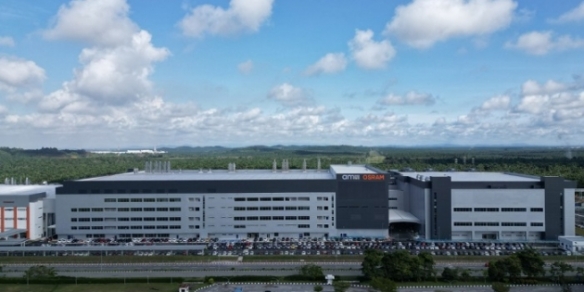In the new world, the CIO challenge is manifold
By Gabey Goh November 5, 2013
- Companies not very good at ‘hitting the delete key,’ believing that everything must be retained forever
- CIOs cannot micro-manage anymore; managing relationships with third-party vendors a key role
 CURRENT technology megatrends such as mobility, social media, cloud computing and big data require a new paradigm in operation and thinking.
CURRENT technology megatrends such as mobility, social media, cloud computing and big data require a new paradigm in operation and thinking.
In his opening keynote presentation at the CIO Leaders Summit, which took place at The Ritz Carlton in Singapore yesterday (Nov 4), Scott Singer (pic), Rio Tinto’s head of Global Business Services and chief information officer, presented a broad outline of the many challenges faced by large organisations in making that shift.
“These trends have thrown us a curveball, pushing the need to retool the organisation from being a typical IT shop which builds and designs large on-premise infrastructure, to being a taker of IT services, which is significant as we move to this new paradigm,” he said.
“The methodology that has served IT units so well over the years is now inappropriate for addressing issues such as agile development and mobile deployments.
“I've got 71,000 internal clients whose demands are completely outpacing our ability to meet them, thanks to the consumerisation of IT,” he added.
When it comes to dealing with the rise of mobility and the bring-your-own-device (BYOD) movement, Singer said that trying to police hardware was “a waste of time,” with a platform-agnostic approach being the soundest strategy to manage it.
One key gap in mobility solutions, in his opinion, was the lack of attention paid to extending mobile capabilities for internally used solutions such as enterprise resource planning (ERP) platforms which still have “a lot of catching up to do” in terms of offering full functionality and access to the workforce.
With the latest buzz surrounding big data, Singer said that for a mining company such as Rio Tinto, the notion of big data is nothing new, with massive volumes of data generated from the company’s exploratory units.
He pointed to a current initiative by the company in developing a virtual mine in partnership with Australia’s University of New South for the purpose of teaching block caving, enabling trainee engineers to practice new mining techniques within the safety of a simulated environment, as an example.
“We’re starting to put sensors in everything and with sensors comes data. Big data can equate to big headaches – for example, we currently have about 1.7 petabytes of enterprise storage and that’s not going to be enough.
“It reminds me of Jabba the Hut from Star Wars, a gluttonous beast of data acquisition with no purge valve. The challenge then becomes about making sense of it, identifying what’s valuable and what you can dispose of,” he said.
He noted that companies in general are not very good at “hitting the delete key,” holding on to the mindset that everything must be retained forever.
“There is a need to embrace the notion of defensible destruction, where data is deleted in a quality controlled, legally defensible and regulatory compliant way. At what time does an organisation have that confidence to hit the delete button? That is different for each organisation and must be outlined,” he added.
Singer also noted that it was important to recognise the need to develop capabilities in relationship management with the increasing dependence on third party partners to execute initiatives.
“For Rio Tinto, 70% of our cost base is already with third party vendors and growing; we have to shift the focus to being better relationship managers,” he said.
Singer added that with traditional CIOs (chief information officers) being so used to running things and having complete control, the challenge here was to avoid having this familiarity of control translate to micro-management of vendor partners.
“For those who have grown up in the client-server world dominated by on-premise deployments, making that shift to more agile environments with cloud computing elements is a big deal. And it’s not just about dealing with outside parties.
“Internally as well, there is a need to make sure that there is a change management strategy in place, keeping the new paradigm top of mind. This also means that CIOs are compelled to make tough calls on people management, especially when staff are unwilling to make that shift into the new world,” he added.
The CIO Leaders Summit is being held from Nov 4 to Nov 5 in Singapore and is organised by Media Corp International. Digital News Asia (DNA) is the official media partner for the event.
Related Stories:
CIOs who don't evolve in the cloud era will be replaced
Gartner on how to become a ‘Machiavellian CIO’
Megatrends fast changing the role of CIOs: Forrester
Post-PC era: Three implications for CIOs, IT leaders
For more technology news and the latest updates, follow @dnewsasia on Twitter or Like us on Facebook.


